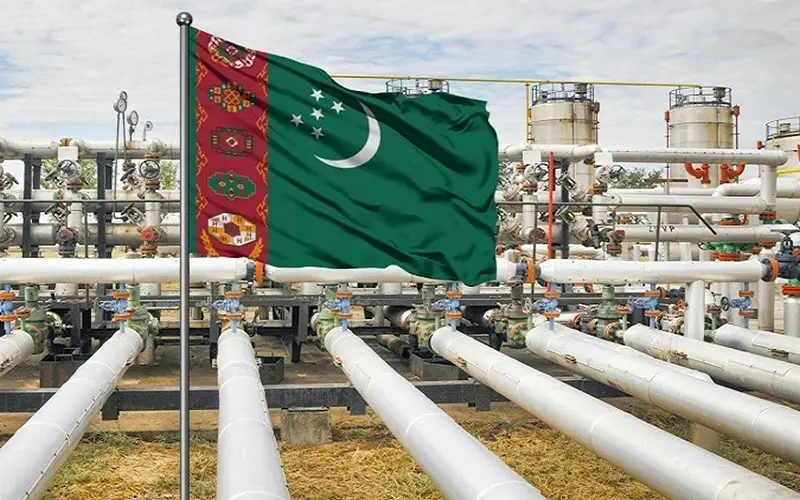Turkmenistan’s Oil and Gas Companies Expand Amid Global Shifts and Domestic Reforms in 2025

Turkmenistan’s Oil and Gas Companies Expand Amid Global Shifts and Domestic Reforms in 2025
Ashgabat, Turkmenistan
Turkmenistan’s oil and gas industry, a cornerstone of its economy, is experiencing significant growth in 2025, driven by state-owned enterprises like Turkmengas, Turkmennebit, and Turkmengeology, alongside international partners such as CNPC and Petronas. With the world’s fourth-largest natural gas reserves, the country is leveraging ambitious production targets, export diversification, and modernization to strengthen its global energy role. However, geopolitical dynamics and global market trends present challenges to these efforts.
Production and Export Growth
Turkmenistan’s oil and gas sector is projected to grow at a compound annual growth rate (CAGR) of 4.0% from 2025 to 2030, according to Mordor Intelligence. In 2024, the country produced 77.62 billion cubic meters (bcm) of natural gas and 8.28 million tons of oil, with 2025 projections showing a 3% increase in gas output to 80 bcm, driven by the Galkynysh field, the world’s largest onshore gas reserve with 27.4 trillion cubic meters. Turkmengas, the state gas company, is spearheading exports, with over 30 bcm annually sent to China via the Central Asia–China gas pipeline, a figure set to rise to 65 bcm upon completion of the pipeline’s fourth line (D) by 2028.
Strategic International Partnerships
Foreign partnerships are critical to Turkmenistan’s energy ambitions. China’s CNPC is investing $1.5 billion in the Galkynysh field’s second phase, targeting an additional 25 bcm of commercial gas per year for China. Malaysia’s Petronas is expanding operations in the Caspian Sea’s Block 1, boosting oil output by 5% in 2025. The government’s open-door policy, supported by the 2016 Hydrocarbon Resources Law, offers flexible agreements like Production Sharing Agreements and Risk Service Agreements, attracting investors to offshore blocks 11, 12, 16, 21, and 23. These partnerships are vital for accessing technology, as Turkmenistan’s oil recovery rates remain low at 15–20% compared to the global average of 30–40%.
Infrastructure and Modernization Efforts
Turkmenistan is investing heavily in infrastructure to support its energy goals. The Turkmenistan–Afghanistan–Pakistan–India (TAPI) pipeline, a $10 billion project, began construction on its Serhetabat–Herat section in September 2024, aiming to deliver 33 bcm of gas annually by 2030. The Seydi Oil Refinery, a key downstream asset, is undergoing a $500 million upgrade to increase capacity to 120,000 b/d by 2027, reducing reliance on imported fuels. Turkmennebit is deploying digital technologies, including IoT and AI-driven seismic analysis, to improve exploration efficiency, achieving a 7% cost reduction in 2024. However, aging infrastructure causes 8% of gas production losses annually, prompting a $1 billion pipeline modernization plan in 2025.
Geopolitical and Market Challenges
Turkmenistan’s gas exports face risks from a projected global LNG glut starting in 2026, which could lower prices as global demand peaks in 2025 at 425 bcm, according to the International Gas Union. Brent crude prices are forecast to drop from $68 per barrel in August 2025 to $50 per barrel in Q1 2026 due to a 1.7 million b/d oil surplus, impacting oil export revenues. Geopolitical tensions, particularly in the Strait of Hormuz, which handles 21% of global LNG, pose indirect risks to Turkmenistan’s maritime exports. The country’s alignment with BRICS+ and energy partnerships with Russia and Iran strengthens its regional influence but raises concerns about potential secondary sanctions.
Energy Transition and Sustainability
Turkmenistan is making gradual progress toward sustainability, driven by international pressure and domestic energy needs. Turkmengas is piloting carbon capture, utilization, and storage (CCUS) at the Bagtyyarlyk field, targeting 300,000 metric tons of CO2 capture annually by 2028. The government’s 2030 Renewable Energy Plan includes $500 million for 2 gigawatts of solar and wind projects, with CNPC contributing to a 100 MW solar plant in Lebap province. However, a 2025 industry survey shows only 30% of executives prioritize low-carbon investments due to high costs and limited infrastructure. Natural gas, powering 80% of Turkmenistan’s electricity, remains a transitional fuel, supporting industrial growth.
Petrochemical Sector Expansion
The petrochemical industry is a growing focus, with demand for natural gas liquids (NGLs) projected to drive 18–20% of global oil demand by 2040. The Turkmenbashi Oil Processing Complex is expanding petrochemical production, targeting 500,000 metric tons of polyethylene annually by 2026. AI-driven process optimization has reduced refining costs by 6% in 2024, enhancing competitiveness against Middle Eastern producers. However, global supply chain disruptions and competition pose challenges to export growth.
Workforce and Industry Consolidation
Workforce pressures are evident, with 1,000 jobs cut in 2024–2025 as companies adopt automation to counter global price volatility. Turkmennebit is retraining 500 workers for renewable energy roles, supported by a $100 million government program targeting 2,000 workers by 2028. Mergers and acquisitions are rising, with 40% of Turkmen firms planning deals in 2025 to access technology, exemplified by Petronas’s $200 million stake in a Caspian offshore block.
Outlook for 2025
Turkmenistan’s oil and gas companies are poised for growth, driven by robust production, export diversification, and strategic partnerships. However, global oversupply risks, infrastructure challenges, and geopolitical uncertainties threaten progress. As Turkmengas and its partners invest in modernization and sustainability, Turkmenistan’s ability to balance these dynamics will shape its role as a key energy player through 2030.







